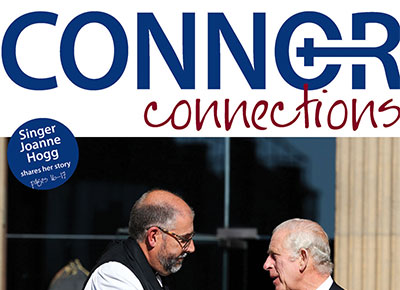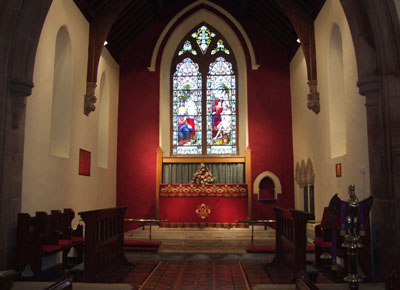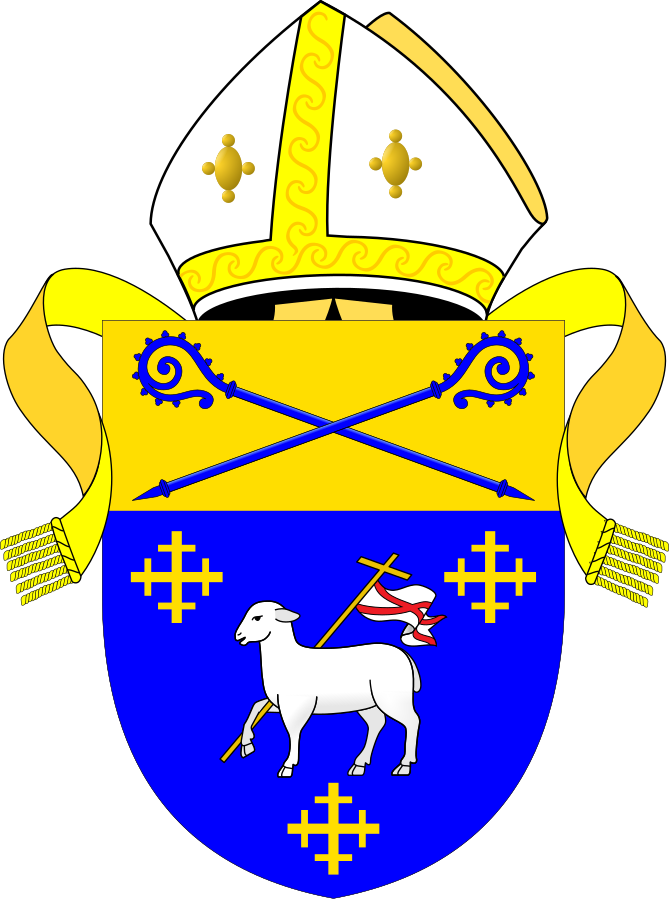Launch of new study of Church of Ireland architecture
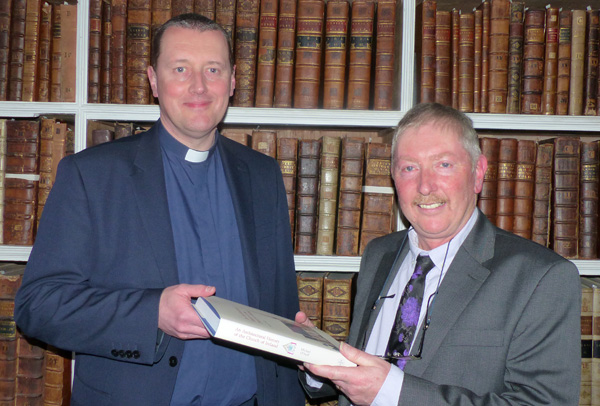
The Very Rev Shane Forster, Keeper of Armagh Robinson Library, and Dr Michael O’Neill.
Armagh Robinson Library was the venue for the launch of Dr Michael O’Neill’s An Architectural History of the Church of Ireland on April 18. The event followed the Dublin launch in the Irish Architectural Archive on March 28.
The Dean of Armagh and Keeper of the Library, the Very Rev Shane Forster, welcomed attendees to the venue ‘here in the heart of the ecclesiastical capital.’ The Archbishop of Armagh is the Chair of the Governors and Guardians of the Library, which is named after Archbishop Richard Robinson who founded it in 1771. Its building was designed by the architect Thomas Cooley, some of whose drawings – which also feature in An Architectural History – were available for guests to view and admire.
“Those links and those connections are so important – the stories and the histories of our buildings,” Dean Forster said, “so as we celebrate the architectural legacy of the Church of Ireland and the publication of this new book, it is wonderful to gain insight into the thought processes, the history and traditions that went into the design and the layout of some of our most familiar church buildings, cathedrals and glebe houses. We have much to be thankful for and a wonderfully rich heritage to celebrate, to protect, and to preserve for future generations.”
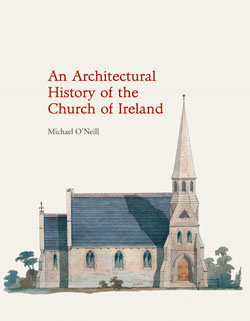 The book was launched by guest speaker Primrose Wilson, President of Ulster Architectural Heritage. Mrs Wilson recalled a Thought for the Day in which listeners were asked to carefully blot out their view of a church building with their finger ‘and then look at the cityscape, streetscape and countryside and see how much it had changed, how bland it had become, and how much it had lost because there was no church building there any longer.’ Armagh was one of the best places in which to imagine this, she noted, due to the multitude and high quality of its church buildings with their spires, towers and more modest settings.
The book was launched by guest speaker Primrose Wilson, President of Ulster Architectural Heritage. Mrs Wilson recalled a Thought for the Day in which listeners were asked to carefully blot out their view of a church building with their finger ‘and then look at the cityscape, streetscape and countryside and see how much it had changed, how bland it had become, and how much it had lost because there was no church building there any longer.’ Armagh was one of the best places in which to imagine this, she noted, due to the multitude and high quality of its church buildings with their spires, towers and more modest settings.
Michael O’Neill was ‘uniquely placed’ to trace this history in a Church of Ireland context from his work in digitising and publishing online the extensive collections of architectural drawings held by the Representative Church Body Library. An Architectural History is ‘contains a vast reservoir of knowledge and is beautifully illustrated.’ She also appreciated the author’s sense of humour and his eye for historical anecdotes about the exterior features and interior fittings of the churches which he studied, not least the special place which memorials have in church buildings.
“Our churches are a great treasure,” Mrs Wilson continued, adding that there is “always an element of surprise” on entering one, as no two are the same.
In conclusion, she recalled a visit that she and her husband, Edward, had made on Easter Sunday this year to a small 19th century church in County Galway. Clear glazing along its east side lit up the building ‘and I thought as I walked in there, it would be hard to deny the Resurrection in this church today.’ She added: “And that is, after all, why we all go to these churches, why we have these buildings, why our ancestors built them for us to enjoy, and why we should treasure them, and I think this book very much helps us to treasure them.”

From left: Dr Raymond Refaussé (Church of Ireland Publishing), Mrs Primrose Wilson (President, Ulster Architectural Heritage), Dr Michael O’Neill, the Very Rev Shane Forster, Keeper of Armagh Robinson Library and Carol Conlin, Assistant Keeper of Armagh Robinson Library.
In his address, Dr O’Neill recalled the book’s origins in an exhibition of Church of Ireland drawings at the Irish Architectural Archive in 2019, followed by conversations with Dr Susan Hood, the Representative Church Body’s Librarian and Archivist, and colleagues in early 2020 about the potential for a book, and then the beginning of the writing in the summer of that year.
He expressed gratitude to everyone who had made the production of An Architectural History possible. “I find, and I think a lot of people find, church buildings fascinating,” he remarked, “not simply recognising the architectural styles but the hints of internal arrangements reflecting changes in churchmanship and worship styles as well as the social and cultural values that are discernible therein.” He reflected that he would be delighted if the book added to the work of architectural writers from whom he had found inspiration, including Brian de Breffny, author of Churches and Abbeys of Ireland.
An Architectural History of the Church of Ireland is available from the Church of Ireland’s online bookstore – https://store.ireland.anglican.org – at £50/€55.
© Copyright The Church of Ireland Diocese of Connor 2025 | Web Design by LD2.digital

